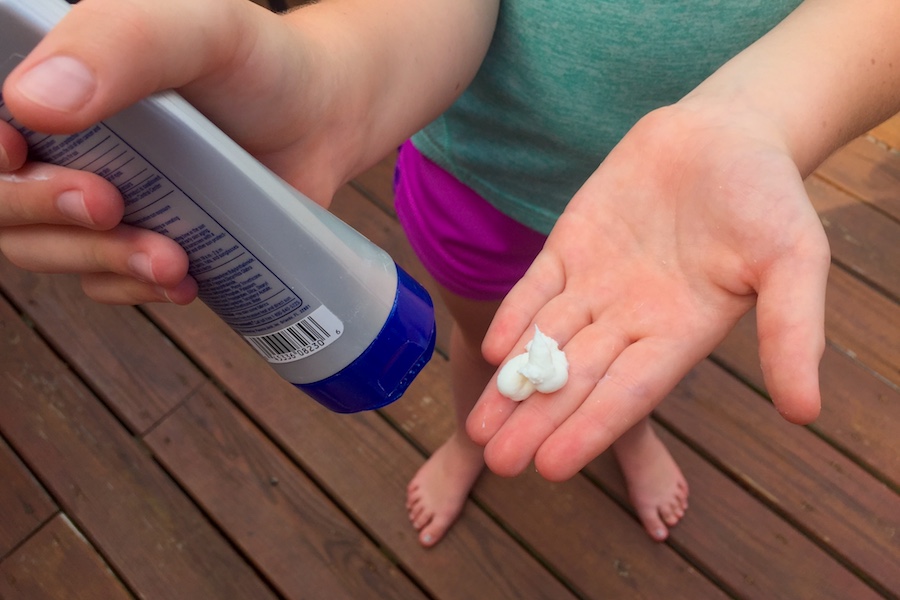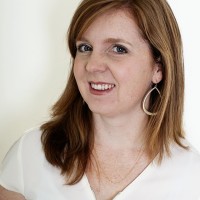Growing up as a fair-skinned, redheaded kid, I’m no stranger to the intricacies of SPF labels. Or sunburns. Like lots of us, I always believed that the higher the SPF, the better the sun protection I’d get, but that’s not necessarily the case.
In fact, the EWG warns against sunscreens with very high SPF over 50, and that goes for kids and adults. In fact, they say flat out to avoid SPF over 50.
But, why?
Related: 2017 EWG best safe sunscreens for kids and babies: Which is the most affordable?
First off, what is SPF?
SPF, or Sun Protection Factor, is a system meant to measure how well a sunscreen will protect you from harmful UVB rays; those are the ones that cause sunburns, damage skin, and can lead to skin cancer.
Theoretically, the higher the SPF, the longer you can stay exposed to these rays and still be protected from sunburn. But, this is hardly an exact science.
It’s important to recognize that SPF only measures sunscreen protection against harmful UVB rays — not the UVA rays that cause damage like wrinkling, sagging skin, and can also contribute to skin cancer.
That’s why, even while wearing SPF, it’s a good idea to wear lightweight t-shirts or rash guards, summer hats, and of course, spend some time in the shade too.
Is that SPF number multiplication trick legit?
To determine the efficacy of your SPF number and a general sense of how long you can spend in the sun without burning, there’s a rule of thumb you’ve probably seen before: Take the amount of time you can be in the sun without burning, then multiply it by the number SPF you’re using.
In other words, if you’re like me and can spend about 10 minutes unprotected in the sun max, an SPF 15 may allow you to be outside for 2.5 hours (10 min x 15 SPF) without burning — if the sunscreen is applied properly.
That means a sunscreen with SPF 30 should conceivably allow me to safely stay in the sun 30 times longer than if I had no sunscreen on, so, for about 5 hours without burning. Right? Not quite.
The big problem: The equation is not foolproof. (Sorry to those of us who have had this equation drilled into our heads for life, but the results will give you a false sense of protection.)
For example, using the equation above, sunscreens with an SPF over 50, like say 100 or more — yes, we found them as high as 130! — would indicate that a person who burns after just 10 minutes could theoretically stay in the sun for almost 17 hours.
Uh, nope.
The reasons why the numbers don’t add up? For this rough estimate to theoretically work, the correct amount of sunscreen needs to be applied in the first place — and then reapplied frequently — in order to maintain efficacy. Plus, skin type, time of day, whether you’re sweating a lot can all affect how well the sunscreen is protecting you.
Related: How to properly apply sunscreen on your kids. It may not be as simple as you’d think.

Compare the low SPF I reapplied frequently on my chest to the high SPF I didn’t, on my shoulder. Grrr.
What SPF really measures
Simply put: SPF is a way to measure how well sunscreen, when applied properly and then reapplied, will protect against UVB exposure. Looking at the numbers this way, and not as a way to determine a specific duration of time in the sun, gives us a whole different picture.
Properly applied — meaning you use one full ounce of sunscreen over your entire body and reapply it about every two hours — SPF 30 blocks about 97% of UVB rays.
SPF 50 blocks 98% of harmful rays.
SPF 100 blocks 99% of harmful rays.
See what’s happening here? You double the SPF number from 50 to 100, and get just a 1–2% increase in effectiveness. Not what you might think.
However, the one thing a higher SPF number does add is more chemicals for your skin to absorb. And at worst, some studies have found that some SPF 100 sunscreens don’t even deliver that degree of protection, meaning you’re paying more for a benefit you won’t get.
Related: The very best beach umbrellas and tents for families, after a ton of research
So, which number SPF should you choose?
The best advice we’ve come across for both kids and adults is to choose a safe sunscreen (and look for a broad spectrum sunscreen, if possible) with an SPF 50 or lower.
More specifically, the EWG recommends sunscreens with SPF values in the 30–50 range.
Any less may not give you all the protection you need; any more and, well, read everything above.
And no sunscreen will work as well as it’s intended to unless it’s applied correctly, and reapplied often.
Fun fact: In Australia, you’re not even allowed to market an SPF value that’s higher than 30. In Europe and Japan, they limit SPF to 50.
As for the USA, it’s possible that in the near future the FDA will mandate what Canada has done, and limit sunscreen labels to a max of “SPF 50+” — although that still may give you the impression that it’s “more” protection than a mere 50. But it’s a start.
Photos © Kate Etue for Cool Mom Picks









